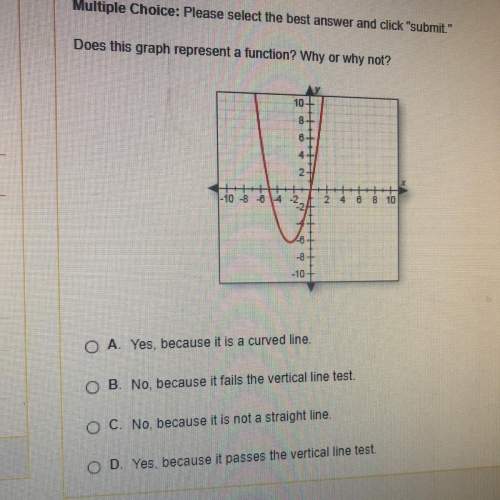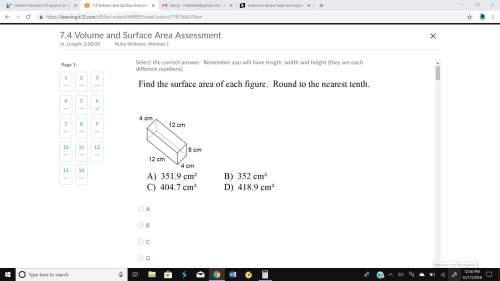
Mathematics, 08.11.2019 20:31 pnpampanoa
Suppose we have an ellipse parameterized by x = a cos(θ) and y = b sin(θ) with a and b positive. this is the ellipse described by the equation x 2/a2 + y 2/b2 = 1. it is known that the area of the ellipse is πab. the following argument shows that there is only one positive real number. what is wrong with the argument? suppose a and b are positive real numbers. we shall compute the area of the ellipse parameterized by x = a cos(θ) and y = b sin(θ) for 0 ≤ θ ≤ 2π by using polar coordinates. since r 2 = x 2 + y 2 , we have r 2 = a 2 cos2 (θ) + b 2 sin2 (θ) = b 2 + (a 2 − b 2 ) cos2 (θ). thus, πab = z 2π 0 z √ b 2+(a 2−b 2) cos2(θ) 0 r dr dθ = 1 2 z 2π 0 (b 2 + (a 2 − b 2 ) cos2 (θ)) dθ = 1 2 2π 0 (b 2 θ + (a 2 − b 2 )(θ/2 + sin(2θ)/4) = (a 2 + b 2 )π 2 so, 2ab = a 2 + b 2 , and hence (a − b) 2 = 0 which means a = b. since a and b were arbitrary positive real numbers, we conclude that there is only one positive real number

Answers: 3
Another question on Mathematics

Mathematics, 21.06.2019 14:10
What is an equation of the line that passes through the point (-2,3) and is parallel to the line whose equations is y=3/2x-4? i am stuck between y=3/2x or y=3/2x+6 : (
Answers: 2

Mathematics, 21.06.2019 18:00
The larger of two number is 4 less than twice the smaller number. the sum is 41. find the numbers
Answers: 2


Mathematics, 21.06.2019 22:00
Sara has been reading about different types of financial grants, including federal pell grants, academic competitiveness grants, smart grants, and teach grants. which statement about these grants is true? filling out a fafsa will not her apply for these grants. she will not have to pay back any funds she receives from these grants. these grants only go to students with less than a 3.0 gpa. she will have to pay back all the funds she receives from these grants.
Answers: 2
You know the right answer?
Suppose we have an ellipse parameterized by x = a cos(θ) and y = b sin(θ) with a and b positive. thi...
Questions


Mathematics, 15.12.2020 21:10

Computers and Technology, 15.12.2020 21:10

Mathematics, 15.12.2020 21:10

Physics, 15.12.2020 21:10

Mathematics, 15.12.2020 21:10


Computers and Technology, 15.12.2020 21:10

Mathematics, 15.12.2020 21:10





Geography, 15.12.2020 21:10

Mathematics, 15.12.2020 21:10

History, 15.12.2020 21:10








